Rhodes Ancient Greece: What to do in Rhodes
Exploring Ancient Greece in Rhodes reveals captivating historical marvels. The Colossus of Rhodes, once among the Seven Wonders of the Ancient World, stood at the harbor’s entrance, honoring the victory over invaders with a giant bronze statue of Helios. Though the statue is gone, its legacy endures on Rhodes Island. Amidst well-preserved architecture and vibrant streets, stepping back in time feels tangible. As we wander ancient pathways and behold remnants of civilizations, curiosity ignites. How many secrets might lie beyond these ancient ruins? What undiscovered treasures await in the heart of Rhodes?
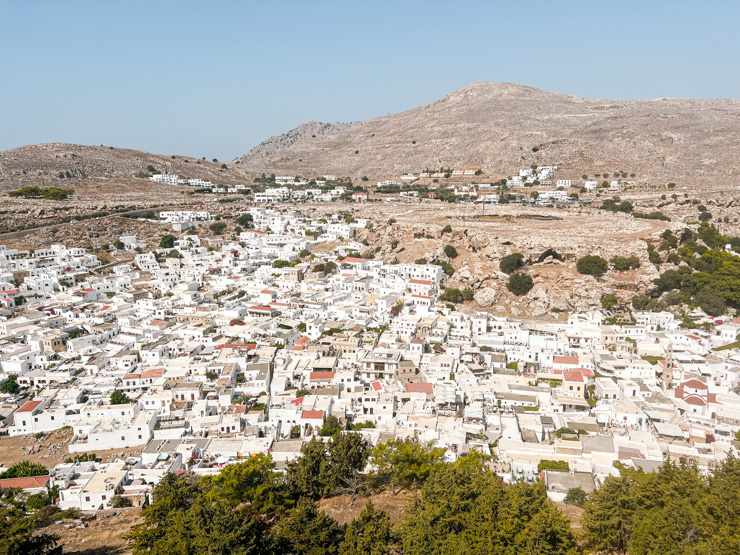
What is the History of Rhodes?
The name of the island is thought to be derived from erod, Phoenician for snake. Rhodes was home to many snakes in ancient Greece antiquity. Rhodes is a small island with a long history. It has been in a strategic position since earliest times. This is due to its location between Asia Minor and the Holy Land.
In the 16th century BCE, Rhodes flourished as one of the important cities of Lindos. It became renowned for its famous schools of philosophy. By the 8th century BC, Rhodes had established itself as one of the most influential cities. The name Rhodes became synonymous with prosperity and culture.
During the Bronze Age, Rhodes continued to thrive. Its strategic position made it a crucial ally of Rome during the Peloponnesian War. In the medieval period, the island reached new heights. This was with the establishment of the medieval city of Rhodes by the Knights of St. John. This new city had impressive fortifications and a bustling harbor. It became an important free port, attracting merchants from Western Europe and beyond.
Rhodes, a Beloved Destination in the Mediterranean.
Rhodes played a vital role in the Eastern Roman Empire and later under the Achaemenid Empire. Its total area of 1,400 square kilometers includes the beautiful island and smaller surrounding islands. Its highest point offers breathtaking views, and its mild climate even in the winter months attracts visitors year-round. Today, Rhodes enchants with its rich history, stunning landscapes, and vibrant culture, making it beloved in the Mediterranean.
The island’s population is largely multilingual, with most locals fluent in both English and Greek language. Greek is the official language of Rhodes. Italian is also common, a legacy of Rhodes’ years under Italian occupation. Additionally, the diverse linguistic landscape reflects the cultural influences and historical connections of the island.
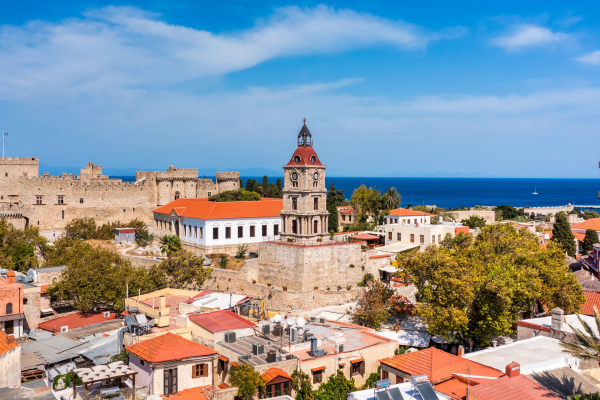
What is Rhodes Old Town famous for?
Rhodes Old Town captivates visitors with its well-preserved medieval architecture and charming narrow streets. A UNESCO World Heritage site, the old town of Rhodes holds a rich history dating back to the Knights Hospitaller, also known as the Knights of St. John, who once inhabited the medieval city.
Heading along the famous Street of Knights, one can feel the cultural ties to the past as they explore the medieval town within the walled city. The ancient ruins scattered throughout the old town offer a glimpse into the city’s fascinating past, making it a paradise for history enthusiasts. The narrow streets wind through the town, leading to hidden gems such as archaeological sites waiting to be discovered. The enchanting atmosphere of Rhodes Old Town transports us back in time, allowing us to immerse ourselves in the stories of the knights and the legacy they left behind.
Is Rhodes Walkable from the Cruise Port?
Walking from the cruise port to Rhodes city center is easy, offering a convenient way to explore the island’s streets and historical sites. Rhodes is walkable, letting visitors delve into its rich history and beauty. Strolling through ancient streets reveals historic sights showcasing the island’s past.
The walk provides a chance to admire ancient architecture and scenic views. From ruins to fortifications, Rhodes abounds in historic landmarks. Walking lets you appreciate details and discover hidden gems.
What to Do in Rhodes Greece?
Let’s explore the fascinating ancient historical sites in Rhodes Greece, including The Streets of Knights, the Palace of the Grand Master, the Medieval Clock Tower, the Acropolis of Rhodes, and the Suleymaniye Mosque. These landmarks offer a glimpse into the rich history and culture of the island, making them must-visit attractions for history enthusiasts and curious travelers alike. Get ready to immerse yourself in the ancient charm of Rhodes as we discover these iconic sites.
The Streets of Knights
The Streets of the Knights is a historic cobblestone street located within the medieval city of Rhodes, Greece. It is one of the most well-preserved medieval streets in Europe and is renowned for its impressive architecture, including Gothic, Renaissance, and Ottoman influences. This most famous road, designed by Chares of Lindos, the street of the knights reflects the cultural contacts and history of Rhodes, echoing tales of ancient Greece.
Originally constructed in the 14th century by the Knights Hospitaller, also known as the Knights of St. John, the street served as the main thoroughfare of the medieval city. It was lined with the residences of the knights, along with various administrative buildings, inns, and workshops.
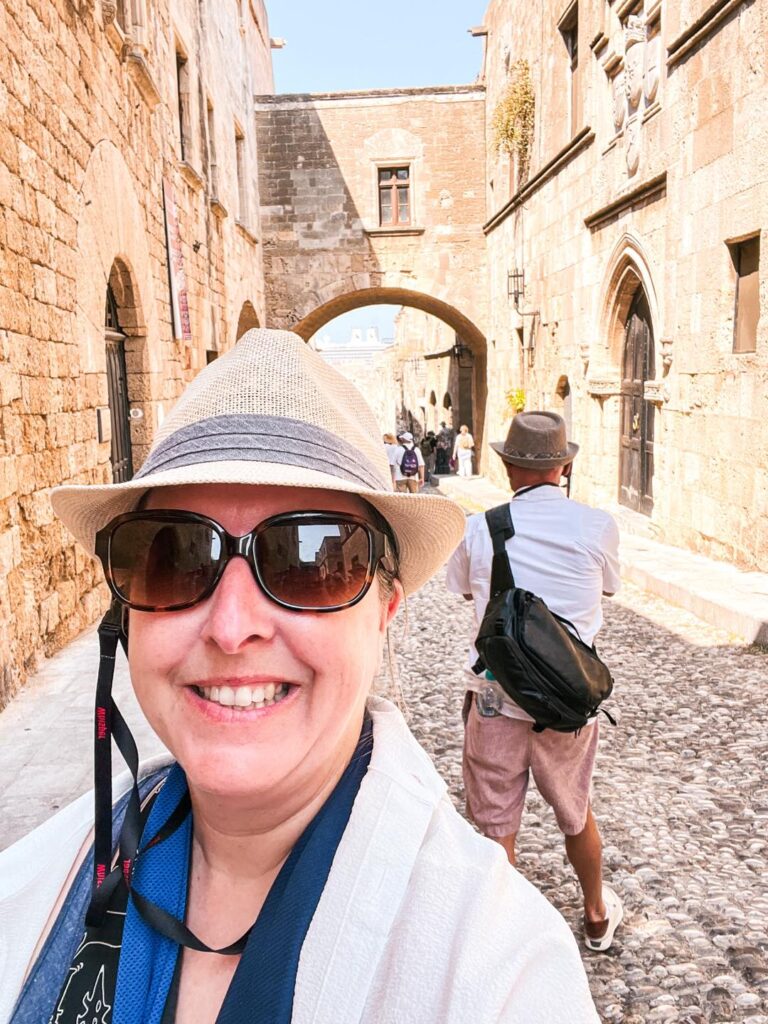
Wandering the cobblestone Streets of the Knights, we couldn’t help but be captivated by the medieval charm of this place. Every corner told a story, and the architecture was nothing short of breathtaking. Today, the Streets of the Knights offer visitors a glimpse into the past, with many of the original buildings still intact. Walking along the cobblestone streets, visitors can admire the grand facades, intricate doorways, and ornate balconies that reflect the architectural styles of the knights’ respective homelands. The street also features several notable landmarks, including the Palace of the Grand Master of the Knights of Rhodes, which served as the headquarters of the Knights Hospitaller.
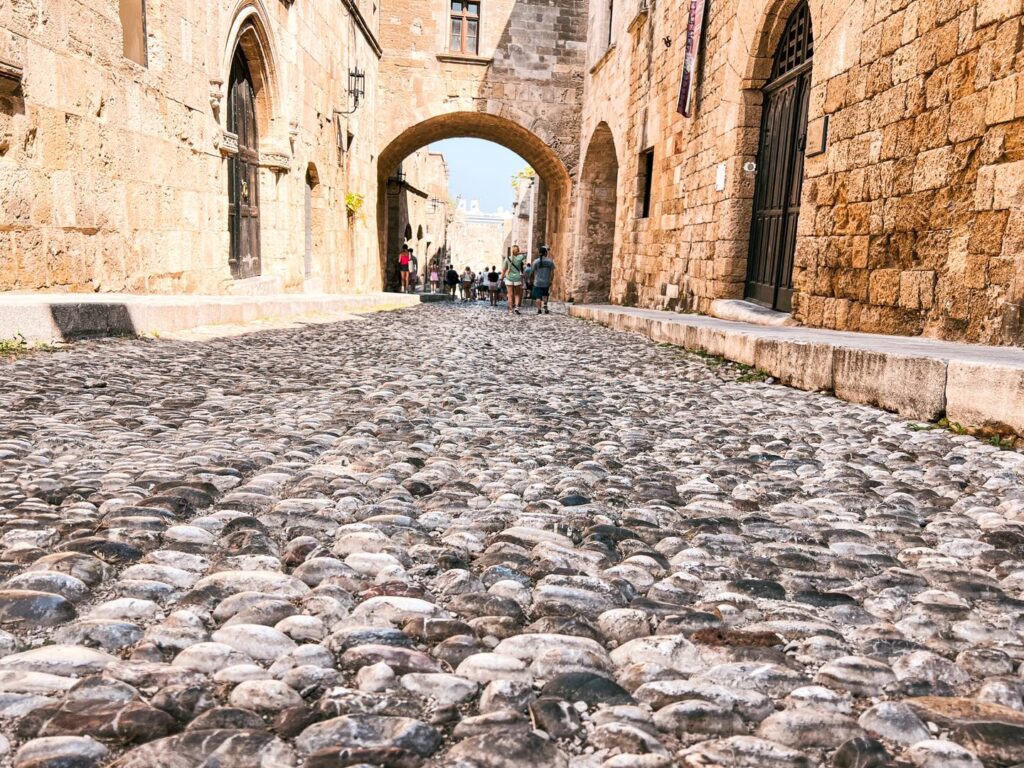
Palace of the Grand Master
The Palace of the Grand Master in Rhodes offers a fascinating glimpse into the island’s rich history and grandeur. Built in the 14th century by the Knights of St. John, this palace stands as a rare example of Gothic architecture in Greece. Originally a citadel, it served as a palace, headquarters, and fortress for the Knights Hospitaller.

Walking through the historic corridors of the Grand Master’s Palace feels like stepping back in time. The majestic architecture and deep history within its walls are awe-inspiring. This medieval fortress, constructed by the Knights of Saint John, served as their headquarters during their rule over Rhodes. The palace is renowned for its Gothic and Renaissance architecture, featuring intricate designs, towering walls, and a stunning courtyard—a true testament to the Knights’ influence in the region.
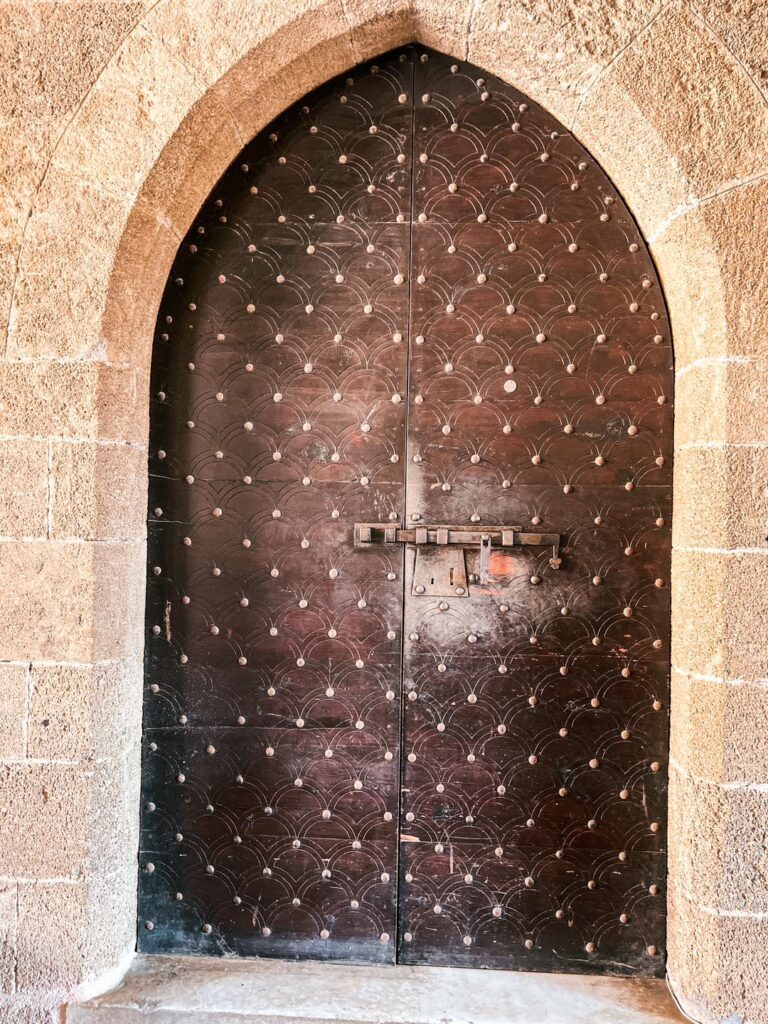
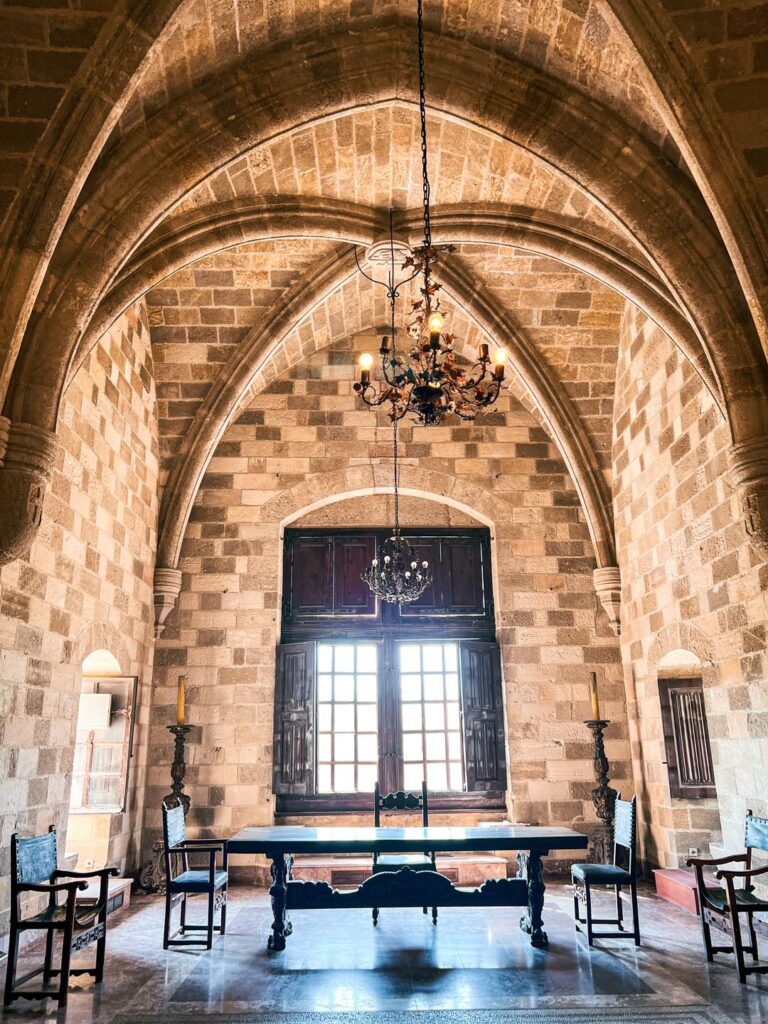
As we explored the palace, we marveled at its impressive blend of Byzantine, Medieval, and Ancient Greek architectural styles. Walking through its halls, one can almost feel the echoes of the island’s ancient history resonating within its walls. The Palace of the Grand Master stands as a proof to the enduring legacy of the Knights of St. John and the Byzantine Empire in the Dodecanese Islands, making it a must-visit site for anyone interested in the Acropolis of Lindos and the history of Rhodes Ancient Greece.
Medieval Clock Tower
Continuing our exploration of Rhodes Greece, the Medieval Clock Tower stands as a prominent historical landmark offering insight into the island’s medieval past. Situated in the heart of Rhodes, this clock tower is a symbol of the island’s rich history under the Knights of Saint John during the medieval period. Built in the distinctive medieval architecture, the tower has witnessed the changes of Rhodes from the island of knights to Ottoman rule in the eastern Mediterranean.
Its strategic location provides breathtaking views of the Aegean Sea, inviting visitors to immerse themselves in the tales of the past. Exploring the Medieval Clock Tower is a must for those seeking to connect with the historical fabric of Rhodes and its enduring legacy.
Suleymaniye Mosque
Located in the heart of Rhodes Greece, the Suleymaniye Mosque offers a glimpse into the island’s cultural tapestry. A relic of the Ottoman Empire, it stands as testament to Ottoman Turks’ influence during the Middle Ages. Its architectural style reflects Turkey’s essence, reminiscent of mosques in Istanbul. The mosque has been closed pending restoration efforts.
It is admired for the intricate design and historical significance. Suleymaniye Mosque served as a place of worship but also showcased stunning Turkish baths, adding to its allure as a historical site. For those exploring Rhodes’ diverse history, you can still marvel at its design from the street level outside.
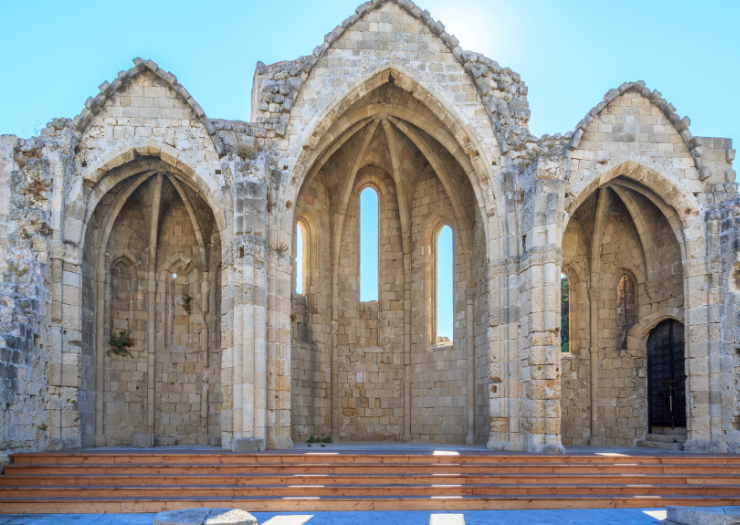
Lady of the Castle Cathedral
The Lady of the Castle Cathedral stands proudly at the end of Knights Road in Old Town. Inside, remnants of wall paintings, including a well-preserved 14th-century figure of St. Lucia, captivate visitors. A European painter, possibly from the Giotto School, likely created it. Under Ottoman rule, the cathedral became a mosque with later additions. When Italy took over, they meticulously restored it to a Christian temple, showcasing their authority.
The Lady of the Castle Cathedral in Rhodes mesmerizes with its historical and architectural significance. As you wander its ancient halls, history surrounds you. The intricate design and ornate details reflect the craftsmanship of a bygone era. Here, time freezes, connecting visitors to Rhodes’ rich cultural roots. It’s a must-visit for those seeking the soul of Rhodes.
Fort of Saint Nicholas
Exploring the Fort of Saint Nicholas in Rhodes, Greece offers a fascinating journey through history and provides a glimpse into the island’s strategic significance. Situated on one of the Greek islands, this ancient fortification dates back to ancient times, around the 3rd century BC. The location’s pivotal position played an important role during various historical events, including the Trojan War era.
Legend has it that the famous Colossus of Rhodes once stood nearby, symbolizing the sun god Helios. Over the centuries, the Fort witnessed the rise and fall of empires, being a part of the Delian League and undergoing several transformations. Today, visitors can explore this rich past by investigating the Fort of Saint Nicholas and learning more at the Archaeological Museum.
The National Theatre of Rhodes
The National Theatre of Rhodes is in the Town Hall Square. Its International and Fascist architectural styles are striking. The innovative use of glass bricks adds grandeur. The performance hall is noteworthy for its height, length, spacious balcony, theater boxes, and well-equipped bar. Designed in 1937, it was originally Teatro Puccini, renowned for operas. Today, it serves as a venue for theatrical performances and cinema, continuing its cultural legacy. Greece’s Ministry of Culture and Sports, with EU funding, will restore and reopen it by end of 2025.

Hippocrates Fountain
The Hippocrates Fountain in Rhodes is a charming spot in the heart of the Old Town. Located near Socrates Square, this small yet significant landmark features a bronze peacock and a traditional stone structure. It’s a popular meeting point for both locals and visitors exploring the surrounding medieval streets. The fountain offers a peaceful moment amidst the vibrant market atmosphere. While there, don’t forget to admire the blend of Ottoman and Byzantine architecture that surrounds the area, offering a glimpse into Rhodes’ layered history.
Other Sites on Rhodes Ancient Greece Island
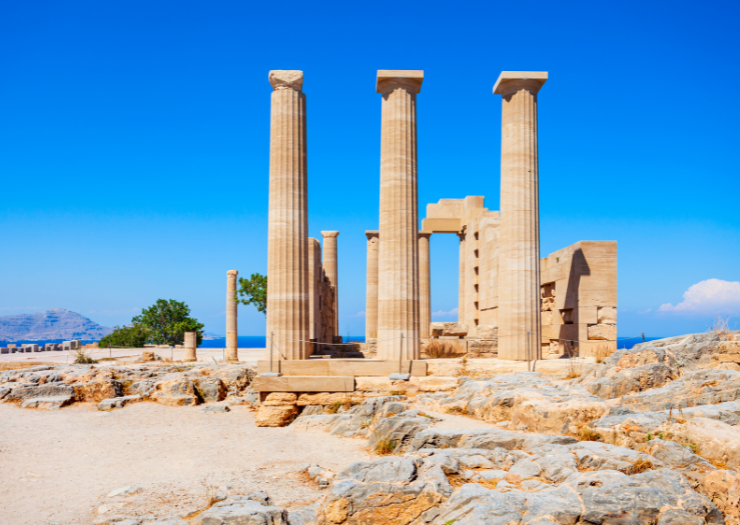
Acropolis of Rhodes
Perched atop Agios Stefanos/Saint Stephen hill, overlooking the city, the Acropolis of Rhodes provides a mesmerizing glimpse into the ancient history of Rhodes Greece. The ancient Rhodes acropolis was colossal with sanctuaries, public buildings, temples, and underground cult areas dating to 2nd-3rd century BC. Current findings represent a fraction of its magnificent history. The acropolis, 3Km from city center, is one of the best places to admire Rhodes’ past relics. An intriguing archaeological site, it offers extraordinary views of pristine surroundings.
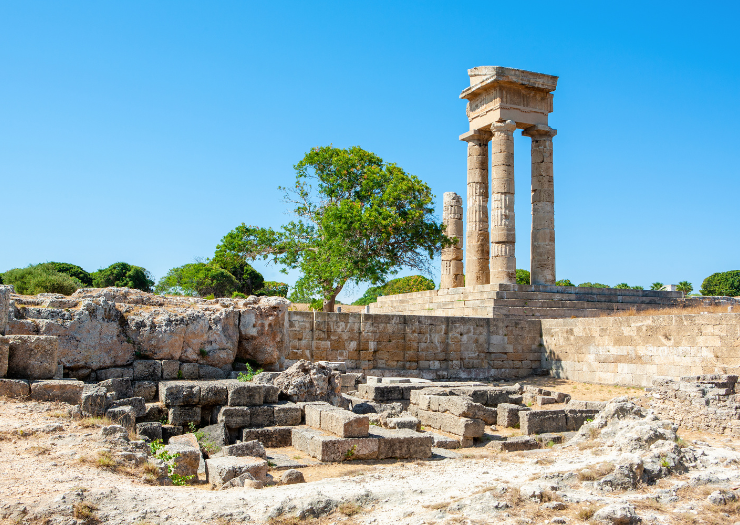
Temple of Pythian Apollo and the Odeion (Classical Theater)
The temple of Pythian Apollo is a majestic structure on the west side of the terrace, located on the southern part of the hill. Although smaller than the temples of Athena and Zeus on the northern edge, it was a poros peripteral temple. Part of the architrave and some portion on the northeast side have been restored.
The Odeion, a small theatre with around 800 seats, was situated below the temple site. Today, only a few seats and the orchestra remain. It’s speculated that the areas were used for affairs of the Apollo cult and the Rhodian School of Rhetoric. Another larger theatre was likely situated on the same grounds around the hill. An inscription suggests a huge library was also near the Odeion and the gymnasium.
Rhodes Ancient Greece Stadium and Gymnasium
On the southeast side of the hill, the ancient stadium of Rhodes once hosted grand athletic competitions. The Haleion Games, to honor the sun god, Halios was one that has been written about. Italians excavated and restored the stadium, preserving the starting mechanism, sphendone, and some lower auditorium seats.
The gymnasium, a huge square-shaped building measuring around 200m on each side, was located east of the stadium. It was valued for its art pieces. So far, only the west side and northeast corners have been discovered.
Sunset Views
For a truly unforgettable sunset experience, make your way to the top of Monte Smith’s Hill. Here, you can witness the stunning beauty of nature blending with the ancient charm of Rhodes. The upper Acropolis of ancient Rhodes in Greece offers the perfect setting to enjoy the mesmerizing sunset, with the crystal-clear sea in the foreground and the historic Temple of Apollo as a stunning backdrop.For an unforgettable sunset experience, head to Monte Smith’s Hill, also referred to as St. Stephen’s Hill, where the beauty of nature meets the ancient charm of Rhodes. The upper Acropolis of ancient Rhodes provides a picturesque setting for witnessing the mesmerizing sunset, with the azure sea in the foreground and the historic Temple of Apollo as a backdrop.
What To Do In The Town of Lindos?
Acropolis of Lindos
Rhodes, the largest island of Greece’s Dodecanese Islands holds the Acropolis of Lindos within its embrace, but not in the cities of Rhodes. The Acropolis of Lindos perches atop a rocky hill overlooking the azure Aegean Sea. This Acropolis symbolizes the island’s storied past. This site has witnessed civilizations rise and fall from the Neolithic period to the Hellenistic period. It echoes tales of Greek mythology and historical conquests. This Acropolis symbolizes the island’s storied past.
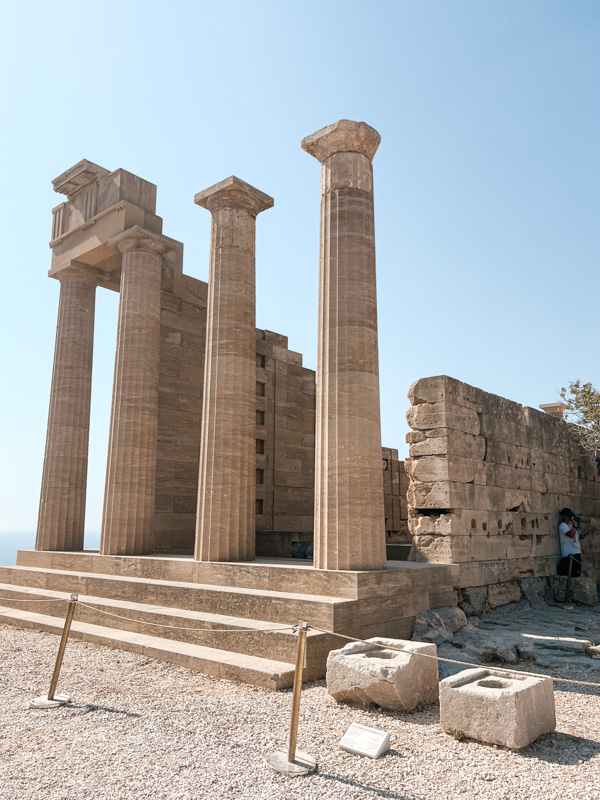

This site has witnessed civilizations rise and fall from the Neolithic to the Hellenistic periods. It echoes tales of Greek mythology and historical conquests. Exploring this ancient wonder in Rhodes, the capital city, offers a glimpse into the island’s heritage. It complements the beautiful beaches and the Archaeological Museum of Rhodes. Walking through its ancient ruins, you feel a deep connection to the rich tapestry of ancient Greece.
Best Restaurants in Rhodes
Food lovers will find Rhodes a must-visit, with its vibrant culinary scene offering diverse flavors. The island caters to all palates, from elegant dining to traditional tavernas. Seafood restaurants serve the freshest catch, often with scenic views. Traditional dishes are plentiful, with appetizers like pitaroudia, zucchini balls, and stuffed cyclamen leaves. Main courses include stewed greens, stuffed veggies, and oven-baked kolokoudi. Unique specialties, such as snails in tomato sauce and goat meat, add variety. Rhodes is famous for its dolmades made with cyclamen leaves (kamilakia) and sweets like melekouni, mantinades, and tachinopita. Enhance your meal with local wines or the traditional Souma drink.

Rhodes’ cuisine reflects both Eastern and Western influences while maintaining a Mediterranean identity. Ingredients like wheat, olives, meat, fish, seafood, cereals, olive oil, nuts, fruits, honey, and herbs enrich the flavors. For foodies, Rhodes promises a culinary adventure. Enjoy fresh seafood, local specialties, and unique dishes that showcase the island’s rich culinary heritage.
The Districts of Rhodes Town
We discovered the city consists of two main districts: Old Rhodes Town and New Rhodes Town. New Rhodes Town, established during the Ottoman period, envelops the Old Town. Known as the Citadel of Rhodes or the Walled City, the Old Town stands as one of the most well-preserved medieval towns in Europe. The Ottoman period saw the creation of the New Town, which surrounds the Old Town.
Both areas offer a variety of lodging, dining, and entertainment options, including restaurants, bars, cafes, and shops. The Old Town charms with its narrow streets and spacious squares, while the New Town, primarily due to space constraints, hosts most of the larger hotels. Additionally, the New Town is conveniently located closer to the main beach.
As we wandered through the ancient streets of Rhodes Old Town, we felt like time travelers, stepping back into the glory days of ancient Greece. The blend of history, culture, and natural beauty on the island truly makes Rhodes a gem of the Mediterranean. So next time you plan a trip, make sure to include Rhodes on your itinerary for a truly unforgettable experience! Looking for other places to visit in Greece? Here is our article on Santorini.
Click the link here to discover the best places to rest your head! From cozy apartments to luxurious villas, your perfect sleep spot is covered.


